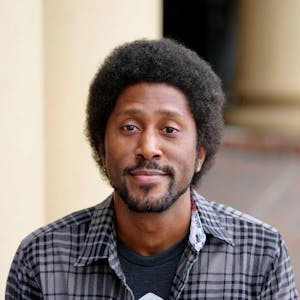Ever wondered how by placing "video" or "audio" into your HTML, you get a media player with controls included? Or how, depending on the type attribute, "input" can be a button, a place to enter text, select a date or file, color picker and more? What if you could create your own element? The answer: Web Components! 🤯 In this talk, we’ll take a look at what Web Components are, how to make one and include it into an application.
Web Components are awesome!
FAQ
Web components allow you to create your own custom, reusable HTML elements that function with encapsulated styling and behavior. They enable you to build robust user interfaces that are scalable and maintainable, similar to standard HTML elements like video or audio tags.
All modern browsers provide support for web components, enabling developers to use them widely across different platforms without compatibility issues.
Yes, web components can be integrated with various frameworks and libraries. Websites like custom-elements-everywhere.com provide information on how well different frameworks support web components.
Practical examples of web components include YouTube's YTD elements and GitHub's time-stamps that indicate how long ago an activity happened. These components are custom elements that enhance functionality and user experience on web platforms.
Web components encapsulate functionality and styling in a reusable way, which means developers can write the code once and reuse it across different projects. For instance, a web component can be designed to display specific data or perform a function and then be reused across various web pages or applications.
Yes, there are numerous tools and resources such as WebComponents.dev for trying out templates, and Open Web Components which provides guidelines and a CLI tool for consistent project scaffolding. These resources help streamline the development process for creating and managing web components.
Web components can be designed to work seamlessly with APIs like the Vonage Client SDK. They can handle events and trigger actions needed for real-time communications such as video, voice, or text messaging, integrating these functionalities directly into web applications.
Video Summary and Transcription
Web components allow you to create your own HTML elements that can do anything you want, and they are supported by all modern browsers. Many companies, including YouTube and GitHub, use web components to enhance their websites. There are extensive tooling and libraries available for web component development. The Model Viewer Web Component enables the display of 3D models in Virtual and Augmented Reality without needing to know underlying technologies. Web components can be used with various frameworks and libraries, and there are resources available to help with compatibility.
1. Introduction to Web Components
Hi, I'm Dwayne, a JavaScript developer advocate at Vonage, and I'm here to make the case for web components. Web components allow you to create your own HTML elements that can do anything you want. They are supported by all modern browsers and many companies are already using them. For example, YouTube and GitHub use web components to enhance their websites. I personally use web components to save time when creating websites and to add functionality like displaying data and creating countdown timers. The tooling around web components is extensive, with many libraries and frameworks available.
Hi, I'm Dwayne, a JavaScript developer advocate at Vonage, and the good folks at JS Nation have given me 10 minutes to make the case on why I think web components are awesome.
So, what are web components? Have you ever used the video, audio, and or details HTML tags? Ever wondered how just by putting the tag with some attributes and properties, you get fully working media player interfaces with volume controls, play and pause buttons, and more? Or a dropdown that just works out of the box? Now, imagine creating your own HTML element that does whatever you want it to do.
What does the browser support look like? All modern browsers have support for web components. You may be saying to yourself, that sounds cool and all, but are web components a thing yet? Luckily enough, it's a website. And the answer is yes, that's it. Just kidding. This site lists some companies that are using web components. And as an exercise for everyone watching, as I scroll down, if there is a company or logo you recognize, say Ding. Here we go. It's a long list. Seen anything yet? The list keeps on going. There's quite a few. And this is just some of them. How many times have you said Ding yet? Keeps on going. There we go.
Now, here's a couple of specific examples. If you view the source code of YouTube, you'll see many HTML tags that begin with YTD. YTD is not a normal prefix for an HTML element, so that's a good clue that it's a web component. Now, when you do things like creating a repo, pushing changes, and or merging PRs on GitHub, you can see how long ago your activity happened. Those are web components, and GitHub is offering them for everyone to use in their own projects. Now, I like to make websites, a lot of websites. For each, I like to have an about page that goes over the who, what, and why I made the site. Now, creating the page over and over again became a chore, so I created a web component called dwayne-made. I can pull the data about the website from an endpoint in the project and pass it into the web component, and dwayne-made knows how to display that data. It saves me a bunch of time to focus on the application itself. Another awesome feature is that a web component can have multiple uses. For example, isn't it cool how the humble input HTML element can do so many different things with just a change of the type attribute? So along those lines, I made dwayne-timer because I was dealing with a lot of time and dates and personal projects and didn't want to hassle with it over and over each time. Not only can it display a date and time local to the visitor of the site but it can also be a countdown timer just with an addition of a property to the Web Component. Now, the tooling around Web Components is pretty awesome. There are so many libraries and frameworks to create Web Components.
2. Web Component Development and Resources
Want to use TypeScript or JSX? Check out WebComponents.dev for templates to kick start your Web Component development. Open Web Components provides guidelines and best practices for consistent development. Explore WebComponents.org for existing solutions and add your own. Easily create WebXR applications without extensive knowledge of underlying technologies like 3JS and Unity.
Want to use TypeScript? There are multiple libraries you can use. More familiar with JSX? No problem. A good resource to give these tools a try without having to download them is WebComponents.dev. Now, WebComponents.dev can do a bunch of things but it can also give you templates to where you can just kind of kick start a Web Component to kind of see if it's what you like as far as coding.
Right now there are 64 templates that you can use. Now, if you're on a team and want to ensure consistency across all the Web Components you build, there is Open Web Components, which provides guidelines, recommendations, and best practices when creating Web Components. They also have a CLI tool that will scaffold a project so that all Web Components will have the same file and folder structure, making it easier for every team member to get up to speed on a component they have never seen before by knowing where to look.
Now, the fact that there are so many people working on Web Components means that there is probably something already built that is similar to what you are looking for. No need to start from scratch, which is awesome. WebComponents.org is a good place to start to see what's out there and even add your own to the list. I'm a big fan of WebXR, Augmented and Virtual Reality on the Web, and always wanted to create an application but didn't have enough experience to be able to create something from scratch without studying a long list of different technologies like 3JS, 3D modeling software like Unity and so much more.
Check out more articles and videos
We constantly think of articles and videos that might spark Git people interest / skill us up or help building a stellar career























Comments